ROOM: The Space Journal is one of the top magazines on space exploration, technology and industry. At ROOM, we share a common objective – advancement of peaceful space exploration for the benefit of humankind, all while bringing you throughly researched articles on a variety of contemporary topics. Our authors include experts and industry leaders from all over the world, which lets us bring you the most up-to-date and detailed information about kepler exoplanet mission.
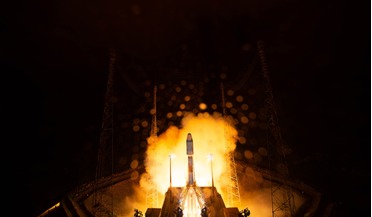 18 December 2019
After delays, ESA’s exoplanet mission launches successfully
18 December 2019
After delays, ESA’s exoplanet mission launches successfully
... ESA and Switzerland, with important contribution from 10 other ESA Member States. ESA’s first mission dedicated to extrasolar planets, or exoplanets, it will investigate known planets beyond our Solar System and provide key insight into the... are made of and how they formed. Cheops will also pave the way for our future exoplanet missions, from the international James Webb Telescope to ESA’s very own Plato and Ariel satellites, keeping European...
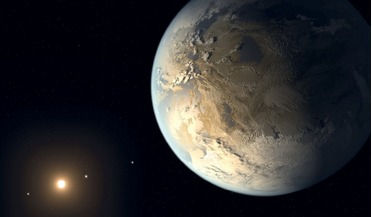 August 2018
Exoplanet census promises radical discoveries
August 2018
Exoplanet census promises radical discoveries
... rogue, free-floating planets. Its coronagraph instrument will pioneer technology for imaging exoplanets that will enable future missions to image Earth-like planets and search for signs of life. The past...magnified brightness of the source star, shown in the top panel. WFIRST Exoplanet Microlensing Survey In Figure 1 we compare the region of orbital sensitivity of NASA’s Kepler mission and WFIRST to the orbits of planets in our solar system. Both ...
 24 November 2021
Astronomers discover more than 350 possible new exoplanets
24 November 2021
Astronomers discover more than 350 possible new exoplanets
...after nine years in deep space, Kepler ran out of fuel and NASA decided to retire the spacecraft in a safe orbit, away from Earth. Although NASA’s newest exoplanet mission TESS has continued to survey the brightest... stars near Earth for transiting exoplanets, Kepler’s data haul – the spacecraft downlinked roughly twelve gigabytes of ...
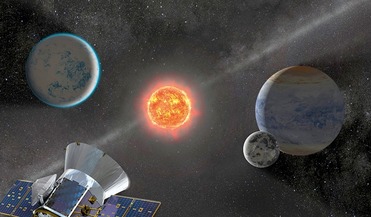 April 2019
Scanning the skies for exoplanets
April 2019
Scanning the skies for exoplanets
... orbit their host stars in 13 days or less; these are considered short orbital period exoplanets. Conversely, Kepler was adept at finding exoplanets with orbital periods from 10 days up to a few hundred days, a feature that proved ... the Sun.” The stars TESS is designed to study are typically 30 to 100 times brighter than those the Kepler mission surveyed. HD 21749b’s host star (HD21749) on the other hand is classed as an M-dwarf or red dwarf. ...
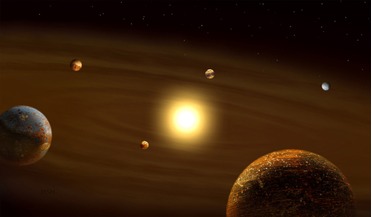 27 July 2019
Hundreds of new planet candidates detected by Kepler
27 July 2019
Hundreds of new planet candidates detected by Kepler
...the only one making substantial discoveries. Although now officially retired, NASA’s first formidable exoplanet telescope – Kepler – has gone one better. Make that a few hundred better. By scanning through... planet-hunting came with a new mission title – K2 – and 15 months after being reassigned to its new stellar target, Kepler had racked up its 1,000th confirmed exoplanet discovery. Kepler’s K2 mission comprised of 19 ‘campaigns,’ lasting around...
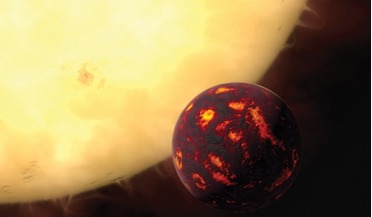 March 2017
Twinkle - a mission to unravel the story of planets in our galaxy
March 2017
Twinkle - a mission to unravel the story of planets in our galaxy
... and planned ESA and NASA space missions such as GAIA, Cheops, PLATO, Kepler II and TESS will increase the number of known systems to tens of thousands. Exoplanets have been detected around every type ... we focus on planets orbiting very bright stars, a small telescope can do wonders. A bespoke space mission for characterisation of exoplanet atmospheres would have several advantages: experience with Hubble and Spitzer indicates that the instrument...
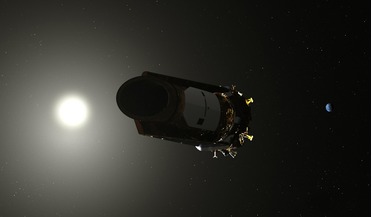 19 November 2018
Kepler officially retires after receiving final "goodnight" commands
19 November 2018
Kepler officially retires after receiving final "goodnight" commands
...not without the occasional technical blip however; four years into the mission after the primary mission objectives had been met, two of Kepler's four gyroscope-like reaction wheels, which are used to precisely point... of Earth-sized exoplanets, its field-of-view had to be switched roughly every three months to compensate for the mechanical glitch. The work-around fix worked and Kepler was able to continue with an extended mission, dubbed K2, which...
 November 2018
How many people does it take to colonise an exoplanet?
November 2018
How many people does it take to colonise an exoplanet?
...Located at 4.2 light years (40,000 billion km), Proxima Centauri b is almost an ideal destination - as far as exoplanets go. But while this distance may be small by astronomical standards, it remains utterly vast on the human scale. ... Even with drastic improvements in technology, our best understanding of physics dictates that human missions will inevitably be multigenerational endeavours In addition, Moore’s scenario included a number of social...
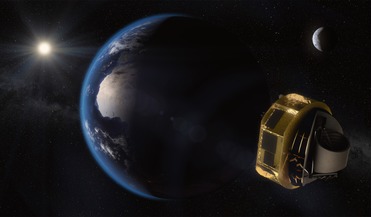 23 March 2018
ESA selects ARIEL to look closely at exoplanets
23 March 2018
ESA selects ARIEL to look closely at exoplanets
... Space Agency (ESA) has selected the Atmospheric Remote‐sensing Infrared Exoplanet Large‐survey mission, otherwise known as ARIEL, as its next medium-class science mission. Due for launch in 2028, ARIEL will address one of the key... scientists to maintain competitiveness in this dynamic field. It will build on the experiences and knowledge gained from previous exoplanet missions."